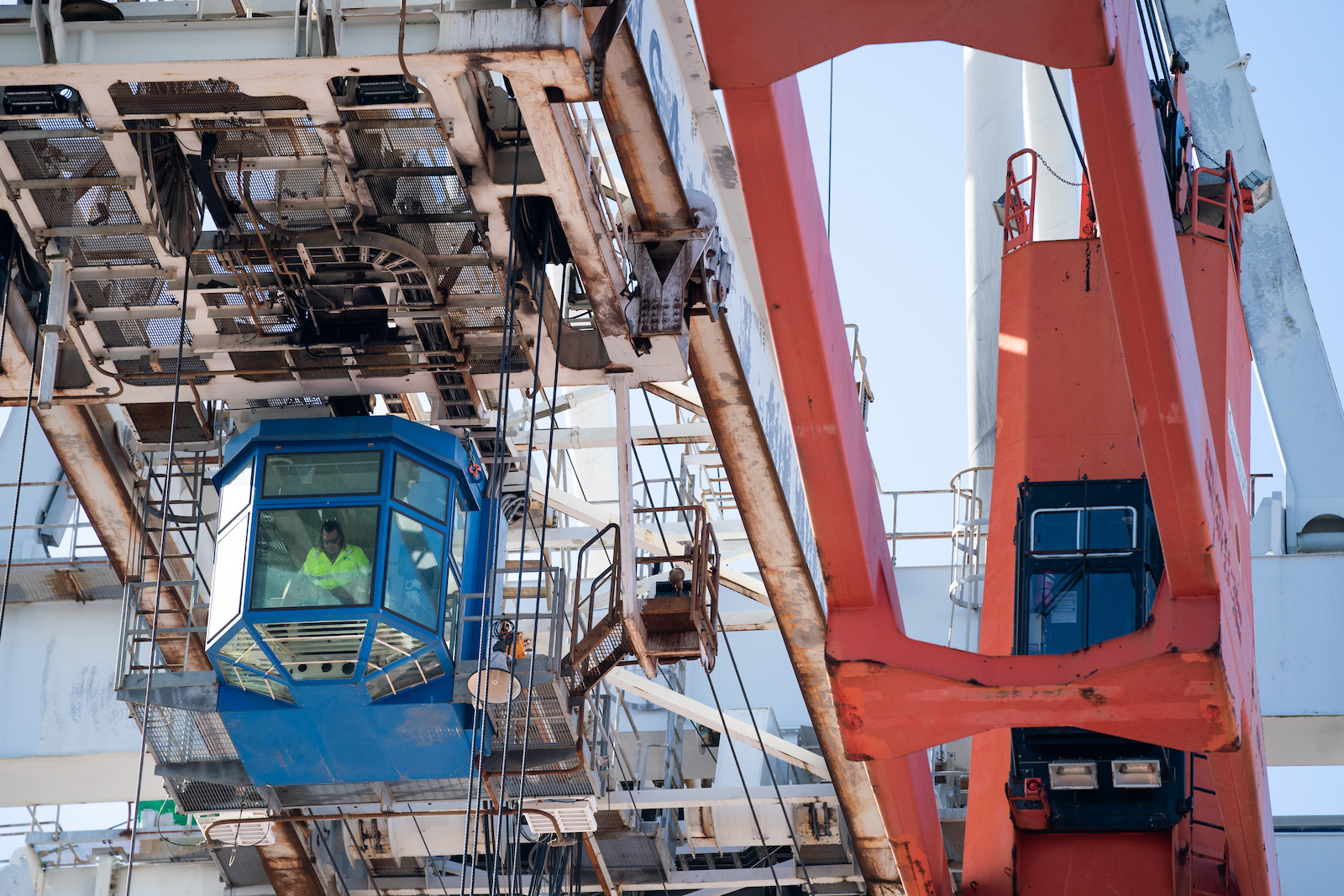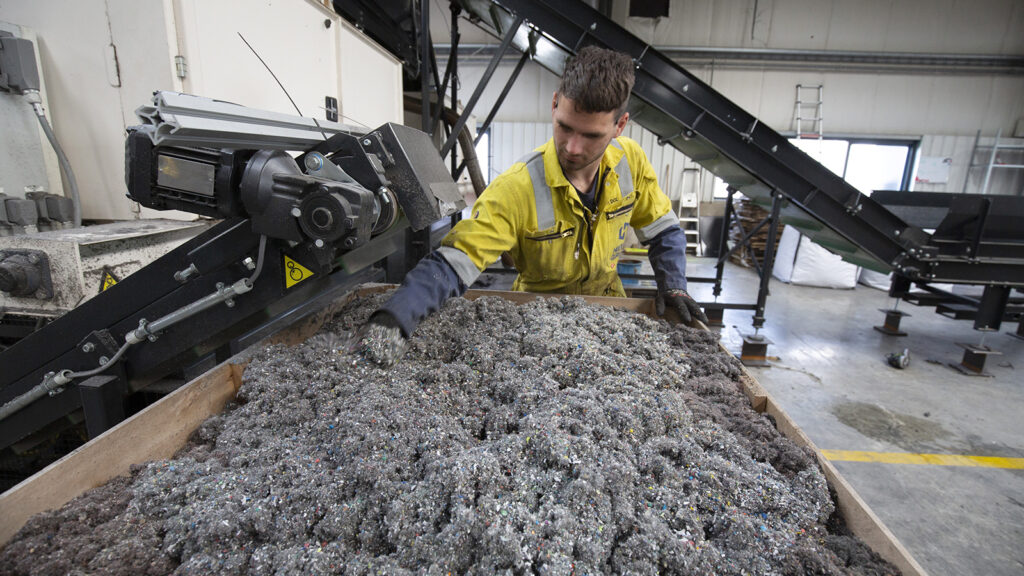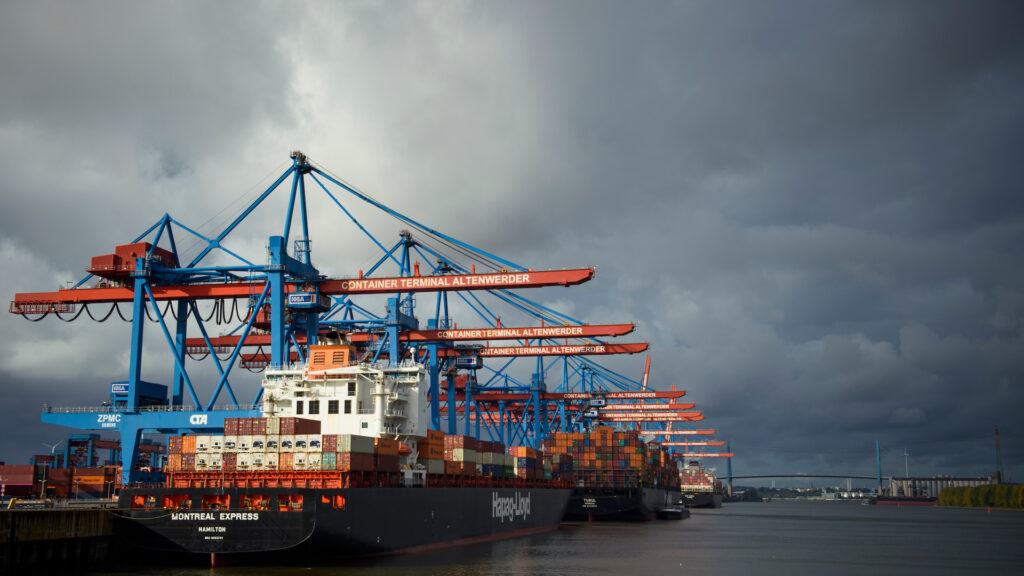What’s the Latest With Supply Chains?

A crane operator works at the Garden City Port Terminal on November 12, 2021 in Garden City, Georgia. The terminal recently completed construction of the Mason Mega Rail Station, doubling the Port of Savannah’s rail lift capacity to one million containers per year.
Photo by Sean Rayford/Getty Images
The turbulence in global supply chains may have diminished since its peak last year, but considerable kinks still remain, and it’s estimated that as much as 50% of the current inflation is being caused by supply chain blockages.
Nonetheless, Donnie Williams, executive director of the Supply Chain Management Research Center at the University of Arkansas, says global supply chains have proved more resilient than many expected and are weathering all the changes in workplace practices.
WILLIAMS: The new normal is a constant state of uncertainty. Certainly, things have stabilized some, certainly there’s certain sectors where you’ve seen demand slow down basically in response to some of the inflationary pressures that we have. That’s allowed some of the easing of some of the pressures that we’ve seen on ports and infrastructures.
One of the problems now is that there’s quite a bit of inventory build-up, particularly in our retail supply chains, on our warehousing distribution networks. And sometimes there’s a mismatch between what customers are demanding versus what retailers are holding. And there are rational behaviors from companies that may seem irrational because they don’t want to miss the opportunity to serve a customer, and the effect is to increase inventory to account for supply chain disruptions. We call this the “bullwhip effect.”
Throwing Darts in the Dark
However, I think there’s been a misunderstanding about supply chains in general, particularly from the U.S. perspective. If you look at the trade volumes that came through our ports over the past couple of years, it was more than we’d ever seen before, with an increase of 28% more imports in April of 2022 from April 2019. This increase hasn’t let up in two years. And if you think about all the pressures of people working from home, of people being sick and having to stay away from work and the stresses that created on labor, yet these supply chains still moved more and brought in more than we ever had before.
There was this big fear that we’d run out of food at some point, but that never happened. And I think that demonstrates that the supply chains were pretty resilient and held up better than what most people actually give them credit for.
Companies exposed themselves to too much risk by single sourcing their raw materials or manufacturing capabilities, or not considering the total cost to deliver a product to the customer, which includes transportation, holding and other various costs outside of just the production cost.
Now, it’s a matter of trying to navigate what’s coming up in the next year to two years. I heard one executive say that trying to anticipate demand moving forward is like throwing darts in the dark, because you can’t really look back at historical data — we don’t have historical data that demonstrates the environment that we’re in now.
BRINK: Where are the top three choke points at the moment?
WILLIAMS: We are still dealing with the uncertainty around lockdowns in China, and the systemic global effect that has on ports around the world. And there are some port backups in Savannah, those are elevated again, while the west coast ports seem to be getting caught up.
The second choke point I am concerned about right now is the supply chain labor market. There has been increasing demand for blue and white collar talent in the supply chain for the last 10 to 15 years. This is causing challenges in capacity, whether you are talking about trucking, distribution or manufacturing.
Then, I think in terms of raw material shortages. The war in Ukraine created bottlenecks in the commodity market, particularly food commodities as Ukraine is a major global supplier of fertilizer and grains. And the semiconductor and precious metals sector is a big concern as companies are still working out plans to handle the shortages for these raw materials in many industries.
Agility Is the Key Word
I don’t think it’s wise for companies to abandon strategies that have over 30 years of research and practice, however, this once-in-a-generation event has caused companies to reflect on some basic theoretical principles in supply chain management, particularly the idea of agility. Companies are taking a stronger look at that, as the reality is that the closer my manufacturing product is to my customer, the more agile I can be because I don’t have to produce as much inventory in order to meet the needs of those customers.
In many cases, companies exposed themselves to too much risk by single sourcing their raw materials or manufacturing capabilities, or not considering the total cost to deliver a product to the customer, which includes transportation, holding and other various costs outside of just the production cost. This is where I believe companies are reevaluating their supply chain network strategies.
BRINK: Does that mean nearshoring is happening in your view?
WILLIAMS: That depends on the products. It depends on where my raw materials supplies are. This is something that we’re going to find out with these semiconductors: Where are the precious metals located that make up the raw materials for these things? In many cases, the U.S. doesn’t have those raw materials, and they’re not that close. And so in those cases, it may make sense for that particular supply chain to have a global footprint. This is relevant in many industries, whether you are talking about pharmaceuticals, perishable food or precious metals.
People tend to misunderstand and misuse the terms just-in-time, lean manufacturing and lean supply chains. It’s important to understand the changing dynamics of customer demand, so that I can respond to it quickly. If I have too much inventory, like we’re seeing now, that slows down my operations, and then I can’t respond.
Lean is really about getting rid of waste, so that I can understand where my processes are being hindered, where bottlenecks are, and I can implement process improvements that can reduce friction in the flow of goods. This allows a company to respond quicker to the consumer with the actual products that they need. So retailers with excess inventory are going to be discounting all of these products that are clogging up their supply chains, because they are creating bottlenecks and reducing the flow of goods to the consumer.
I don’t think just in time is going away. And I don’t think companies or shareholders or the general public want companies to hold more inventory, because that’s going to drive the cost of goods up, which is going to drive prices up.






